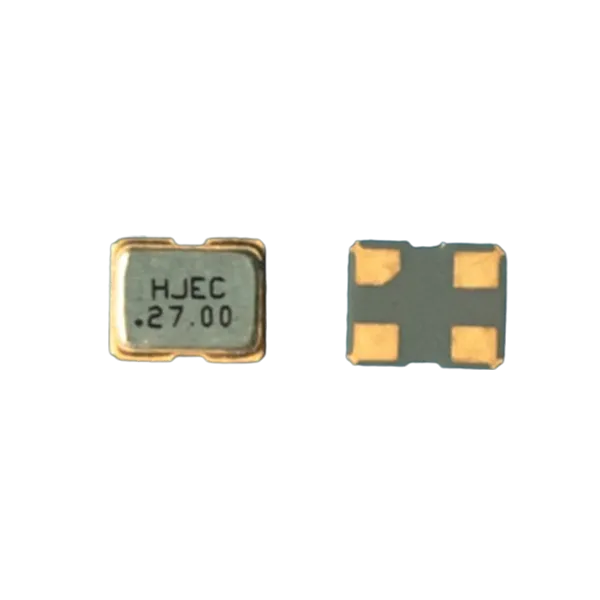How to Test and Verify the Performance of Crystal Oscillators
Crystal oscillators are essential components in electronic circuits, providing precise frequency references for a wide variety of applications. To ensure that they perform as expected in real-world conditions, thorough testing and verification are crucial. In this article, we will explore the key methods and tools used to test and verify the performance of crystal oscillators.

1. Understanding Crystal Oscillator Performance Parameters
Before diving into the testing process, it's important to understand the primary performance parameters of a crystal oscillator:
Frequency Stability: The ability of the oscillator to maintain a constant frequency over time and varying environmental conditions.
Aging Rate: The frequency shift over time due to the aging of the crystal.
Phase Noise: Variations in the phase of the oscillator signal, which can affect signal integrity in high-precision applications.
Start-up Time: The time required for the oscillator to stabilize and output a reliable signal after being powered on.
Load Capacitance: The capacitance required for proper operation of the crystal, which can affect frequency accuracy.
Temperature Stability: The oscillator's ability to maintain its frequency within specified limits across a wide range of temperatures.
2. Key Test Methods for Crystal Oscillators
Testing the performance of crystal oscillators involves several key methods:
a) Frequency Testing
One of the most basic and important tests is verifying the output frequency. This can be done using:
Frequency Counters: A high-precision frequency counter measures the output frequency of the oscillator. The measured frequency should match the specifications provided by the manufacturer, with tolerances allowed for manufacturing variability.
Oscilloscopes: An oscilloscope can display the waveform of the oscillator output, allowing engineers to visually confirm the frequency and waveform quality.
b) Aging Test
To assess the aging rate, a crystal oscillator is typically subjected to long-term operation under standard conditions. The frequency drift is measured over time, usually by comparing the oscillator's output frequency against a highly stable reference. The aging rate is expressed in parts per million (ppm), and most crystal oscillators specify an aging rate of ±5×10^-6 or better per year.
c) Phase Noise Measurement
Phase noise is an important factor in many applications, particularly in communication systems and radar. Phase noise can be measured using:
Phase Noise Analyzers: These instruments measure the short-term frequency stability of the oscillator by analyzing its spectral density. A lower phase noise level indicates a more stable oscillator, ideal for precision applications.
d) Temperature Stability Test
Crystal oscillators are often required to perform under varying temperature conditions. To test temperature stability:
Thermal Chambers: The oscillator is placed in a temperature-controlled chamber where the temperature is varied across a specified range (e.g., -40°C to +85°C). The frequency variation is measured at different temperature points to assess how well the oscillator maintains its performance under temperature changes.
Temperature Coefficient: This is typically specified by the manufacturer and represents how much the frequency shifts with a change in temperature, measured in parts per million per degree Celsius (ppm/°C).
e) Start-up Time Test
The start-up time of a crystal oscillator refers to how long it takes from powering on to reach a stable output frequency. This test is particularly important in applications where fast startup is essential, such as in communication systems. Engineers measure the time it takes for the oscillator to stabilize after power-up using an oscilloscope or other timing instruments.
f) Load Capacitance Measurement
Load capacitance is critical to ensuring that a crystal oscillator operates at the correct frequency. To test this:
Capacitance Meters: These tools are used to measure the load capacitance on the oscillator circuit. The capacitance should match the values specified by the crystal manufacturer, as deviations can affect the frequency accuracy.
3. Verification of Oscillator Performance in Real-World Conditions
Testing in a lab environment is crucial, but verifying an oscillator’s performance in real-world conditions ensures its reliability. This can involve:
Field Testing: Oscillators should be tested in the actual environments where they will be used. For example, a GPS receiver may require the oscillator to perform accurately in a wide range of temperature and humidity conditions.
System-Level Testing: The oscillator should be integrated into the system and tested for overall performance. This helps identify any issues that might arise due to interactions with other components or external interference.
4. Conclusion
Testing and verifying the performance of crystal oscillators is essential for ensuring that they meet the necessary specifications for their intended applications. Frequency stability, aging rate, phase noise, temperature stability, and start-up time are all key factors that should be rigorously tested. By employing the right testing methods and tools, manufacturers and engineers can guarantee that their crystal oscillators deliver consistent and reliable performance under all conditions. Whether it's for communication systems, industrial control, or military applications, understanding and verifying oscillator performance is crucial for the success of any electronic system.
Previous post
Applications of Crystal Oscillators in IoT Devices-
Are you a manufacturer or a trading company?Thangshan Huixun is a manufacturer of crystal oscillators, Our factory is located in Tangshan city Hebei province, China. Welcome to visit us.
-
How long is your delivery time?Delivery time for customized orders will be 2-4 weeks. 24 hours will be shipped out if in stock.
-
Do you offer samples? Is it free or not?Small quantity free samples are able to be offered and shipping cost should be paid by customer.
-
What basic information to provide when ordering a crystal?We typically ask customers to provide the center frequency, the cutting angle type (AT or BT), the holder or package type, the equivalent series resistance (ESR), frequency tolerance, stability, load capacitance, operating temperature range, drive power, aging characteristics, and any additional requirements for OEM customizations.
-
Do you have any certificationWe have certification ISO9001, IATF16949.
-
Do you accept OEM and ODM order?Yes, warmly welcome OEM or ODM order, we are able to provide OEM services for customers
Reach Out to Us Today!

